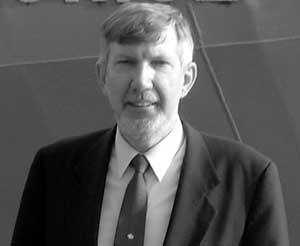
|
|
G. Michael Purdy
|
G. Michael Purdy, a geophysicist who has guided federally-supported research as division director of ocean sciences at the National Science Foundation since 1995, will join Columbia University on December1st as director of the world-renowned Lamont-Doherty Earth Observatory, Executive Vice Provost Michael Crow announced Wednesday (9-27-00).
Purdy, a specialist in marine seismology, will oversee more than 500 scientific, technical and support personnel, including 100 scientists and 100 graduate students, at Columbia's earth sciences campus in Palisades, N.Y. Professor John Mutter will continue as interim director until Purdy steps into his new role.
Since 1995, Purdy has been director of the Division of Ocean Sciences in the Geosciences Directorate of the NSF. For the previous 21 years Purdy had a distinguished career at the Woods Hole Oceanographic Institution, beginning in 1974 as a postdoctoral scholar and rising in 1991 to become chairman of the Department of Geology and Geophysics, an appointment he held until 1995 when he joined the NSF.
Purdy said he was drawn to Lamont-Doherty because of the substantial breadth of its research on the origin, history and processes of the planet. Research at the 51-year-old Observatory is often interdisciplinary and includes seismology, marine geology, geophysics, terrestrial geology, petrology, geochemistry, climate studies, atmospheric science, oceanography and paleontology.
Purdy noted that the creation of the Columbia Earth Institute, of which Lamont-Doherty is affiliated, created the framework at the University for the broadest possible inquiry into Earth's processes, both in the natural and social sciences and in policy studies.
"At this critical time for our planet, as we struggle toward global sustainability, it is essential that we seek the broadest possible collaboration, among scientists of different disciplines and between the scientific and policy communities," Purdy said.
At the Division of Ocean Sciences, Purdy oversaw a $200 million budget devoted to ocean science research, the Ocean Drilling Program, which collects and analyzes deep-sea cores and boreholes to examine the structure and history of the ocean basins, and major shared-use oceanograhic facilities, including 28 research vessels. Purdy was coordinator of a major NSF initiative, Life in Extreme Environments, in which scientists study microbial life forms and the extreme environments they inhabit in hopes that they will provide insight into how these organisms adapt to diverse environments and shed light on the limits within which life can exist.
Purdy was educated at Imperial College of London University and earned the Ph.D. at Cambridge University.
Provost Jonathan Cole said, "In its half century, Lamont-Doherty has established an unparalleled record in understanding how our planet works. I am confident that this distinguished tradition will continue under the guidance of Mike Purdy."
"This is an exciting time in Lamont's history," said Crow. "As the Observatory enters the second half of its first century, the role of earth sciences and understanding the complex interactions of the life supporting systems on our planet is of ever increasing importance to society. Lamont scientists and staff will continue to contribute to our understanding of our planet from its inner core through the outer atmosphere."
Lamont-Doherty scientists devised prototypical seismic instruments for monitoring earthquakes and nuclear weapons tests, for exploring the Earth's deep interior and set up the first global seismic network. Its researchers developed the first modern instruments to study the seafloor; their crucial observations confirmed continental drift, seafloor spreading and plate tectonics.
Guided by Columbia's commitment to a leadership role in building toward a sustainable future, the Earth Institute has mounted an intensive, widely collaborative effort to understand earth's processes and the human role in them - from global warming to habitat loss and species extinction to wide-scale pollution and environmentally unsustainable development. In addition to Lamont-Doherty, the Earth Institute's affiliates include the Biosphere 2 Center in Arizona, the Laboratory of Populations, the International Research Institute for Climate Prediction and the Center for Environmental Research and Conservation.
|
